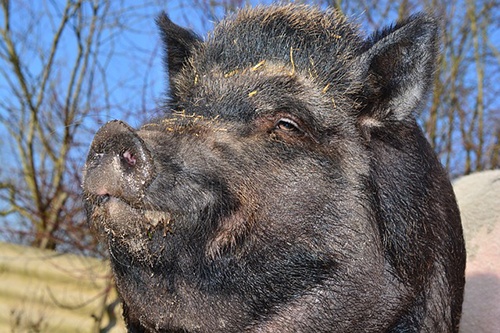
Sometimes the SAT Reading section will ask you about literary terms. But how often? And which terms do you need to be familiar with in order to get these questions right? This article will give you the low-down on what you need to know.
Overview: Literary Terms on the Current SAT
The current SAT Reading section covers literary terms in a less direct way than the 2005-2015 version of the test did. It doesn’t ever ask you to identify a specific literary technique, but the passages are more challenging than they have been in the past, and at times you'll need to rely on knowledge of literary terms to answer questions that aren't directly related. I'll give you a couple examples to demonstrate what I mean.
Sample Question #1
Which choice best describes the developmental pattern of the passage?
A. A careful analysis of a traditional practice
B. A detailed depiction of a meaningful encounter
C. A definitive response to a series of questions
D. A cheerful recounting of an amusing anecdote
While this question doesn’t contain direct references to literary terms, it requires some vocabulary knowledge related to writing technique. In order to understand choice D, you need to know what an anecdote is (it’s just a personal story). You also need to have a good sense of what the question means by a “developmental pattern” and have strong enough reading comprehension skills to identify which of the choices best represents the structure of the passage.
Sample Question #2
According to the passage, Woolf chooses the setting of the bridge because it
A. is conducive to a mood of fanciful reflection
B. provides a good view of the procession of the sons of educated men
C. is within sight of historic episodes to which she alludes
D. is symbolic of the legacy of past and present sons of educated men
For this question, we have to understand answer choices that incorporate several literary terms including mood, allusion, and symbolism. This means background knowledge of literary terms is helpful if not completely necessary in order to feel comfortable with this question. However, the words are used in such a way that you can figure out what the answer choices mean without knowing super specific definitions of the terms if you pay close attention to context clues.
Sample Question #3
This question comes closer than the other example to asking about literary terms directly. I'll go into more detail about how to interpret it and find the correct answer.
The description of how Lady Carlotta “put the doctrine of non-interference into practice” (lines 14-15) mainly serves to
A. foreshadow her capacity for deception.
B. illustrate the subtle cruelty in her nature.
C. provide a humorous insight into her character.
D. explain a surprising change in her behavior.
The answer choices in this question include references to foreshadowing and humor, two common literary terms.
Here are the lines the question references:
Only once had she put the doctrine of non-interference into practice, when one of its most eloquent exponents had been besieged for nearly three hours in a small and extremely uncomfortable may-tree by an angry boar-pig, while Lady Carlotta, on the other side of the fence, had proceeded with the water-colour sketch she was engaged on, and refused to interfere between the boar and his prisoner.
Finding the Solution (Process of Elimination)
Now I'll go through all the choices in detail to show you how and why three out of four of them can be eliminated based on what we know about the meanings of literary terms and the content of the passage.
Choice A: foreshadow her capacity for deception
Putting aside the foreshadowing aspect of this answer, how is Lady Carlotta being deceptive in the passage? It would be deceptive if she had offered to help the “prisoner” and then failed to follow through, but that’s not what happened. This answer can already be eliminated without looking further along in the passage to see if the incident represents foreshadowing.
Choice B: illustrate the subtle cruelty in her nature
There is no subtle cruelty being illustrated here. If anything, it's outright cruelty because she simply refuses to help the woman who is trapped by the boar. However, because the woman trapped by the boar is one of the “eloquent exponents” of the doctrine of noninterference, it wouldn’t be quite right to say this is cruelty. The woman becomes the victim of a policy that she advocates. This answer can be eliminated as well.
(Side Note: If you didn't know what "subtle" meant, you might still be able to figure out this answer choice, but it would be tough. This choice demonstrates how vocabulary in the questions and passages on the new SAT is becoming more difficult in order to compensate for the elimination of sentence completion questions.)
Choice C: provide a humorous insight into her character
This answer makes the most sense. The events in the passage signify that Lady Carlotta has a sense of humor; she allows the woman who is trapped by the boar to be betrayed by her own belief in noninterference. I’m picturing Lady Carlotta doing her watercolor sketch while staring at the woman in the tree and being like “But you said I’m not supposed to interfere! There’s nothing I can do!” in a really fake-nice tone.
Choice D: explain a surprising change in her behavior
This incident does mark a change in her behavior because earlier in the passage she ignores her friends’ insistence on noninterference. It's not a “surprising change” though. It’s a logical reaction based on Lady Carlotta’s sense of humor (and sense of karma). Get rid of this answer!
Choice C is the correct answer!
 The smuggest boar I've ever seen, and I've seen some smug boars in my time.
The smuggest boar I've ever seen, and I've seen some smug boars in my time.
That question is the closest you'll get to being asked outright about literary terms, but that doesn’t mean they’re irrelevant. You should still know the meanings of metaphor, irony, and humor. Even if these words aren’t answers to questions, it will be helpful for you to be aware of their definitions.
Take, for example, this paragraph of a sample passage:
To avoid...the evils of inconstancy and versatility, ten thousand times worse than those of obstinacy and the blindest prejudice, we have consecrated the state, that no man should approach to look into its defects or corruptions but with due caution; that he should never dream of beginning its reformation by its subversion; that he should approach to the faults of the state as to the wounds of a father, with pious awe and trembling solicitude. By this wise prejudice we are taught to look with horror on those children of their country who are prompt rashly to hack that aged parent in pieces, and put him into the kettle of magicians, in hopes that by their poisonous weeds, and wild incantations, they may regenerate the paternal constitution, and renovate their father's life.
This passage makes extensive use of a metaphor comparing the state to an ailing father figure to emphasize its point about the way people should approach changes in government. This could be confusing or downright incomprehensible if you’re not comfortable with the advanced use of similes and metaphors in writing. The SAT has compensated for the elimination of sentence completion questions by adding in passages that incorporate more challenging vocabulary words and advanced literary techniques.
List of Vocabulary Terms
To summarize, here's a comprehensive list of the literary terms that will be useful for you to know for reading questions on the SAT:
- Allusion
- Analogy
- Analysis
- Anecdote
- Foreshadowing
- Humor
- Irony
- Metaphor
- Mood
- Simile
- Symbolism
- Tone
Conclusion
On the current SAT, there are no questions that ask directly about the use of literary devices. However, knowledge of literary terms is still helpful in interpreting passages and answer choices that occasionally use these techniques in their descriptions of ideas and events.
Knowledge of literary terms isn’t vital for doing well on the SAT, but it’s helpful to know some basic definitions so that you’ll feel more confident if you come across any questions that ask about them!
What's Next?
Want to find out what skills you'll need to ace the Reading section? Check out our article on what's really tested on SAT Reading and Writing.
If you're worried about vocabulary, read these articles on the importance of vocabulary on the SAT and the best way to study SAT vocabulary words.
If you're not sure whether you should take the SAT or the ACT, take a look at this article that outlines the differences between them.











